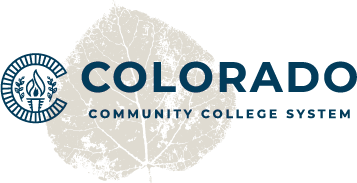State Board | Policies and Procedures
SP 6-10c – Anti-virus and Anti-malware Management
COLORADO COMMUNITY COLLEGE SYSTEM
SYSTEM PROCEDURE
Anti-virus and Anti-malware Management
SP 6-10c
APPROVED: January 28, 2021
EFFECTIVE: January 28, 2021
REFERENCES: Board Policy (BP) 6-10, Cyber Security Policy
APPROVED:
/ Joe Garcia /
Joseph A. Garcia
Chancellor
Basis
This procedure documents specific requirements, which must be met for the protection of Information Systems and Assets from computer viruses and other malware and is implemented to define what the Colorado Community College System and its Colleges (“CCCS”) must do to identify Viruses and Malware on its Information Systems or Assets.
Application
This procedure applies to Information Systems or Assets owned, leased, managed, and maintained by the System Information Technology Department (“System IT”) or the College Information Technology Department (“College IT”) Department or by third parties on behalf of CCCS.
Definitions
Virus
A computer virus is a malicious code designed to spread from host to host by itself without the user’s knowledge to perform malicious action. Virus is a specific type of malware.
Malware
Malware is a collective term for any type of malicious software including viruses, ransomware, and spyware. Malware typically consists of malicious code designed to cause extensive damage to data and systems to gain unauthorized access to a network.
Virus Definition
A virus definition, also known as a virus signature, is a binary pattern (a string of ones and zeros) that identifies a specific virus. An anti-virus software references the virus definition database to determine whether the programs or files contain viruses.
Procedure
The System Chancellor delegates to the System Vice Chancellor for Information Technology responsibility for oversight of compliance with and implementation of this procedure. Further, the System Chancellor delegates to the College Presidents the responsibility to implement and compliance with this procedure at their respective institution.
Anti-virus and anti-malware help to safeguard against security vulnerabilities, mitigate threats to local workstations and laptops, and better protect CCCS Information Systems and Assets. The following procedure establishes security baselines around Virus and Malware prevention and ensures the updating of CCCS Information Systems.
Infrastructure
System IT or College IT shall install and maintain an anti-virus or anti-malware solution on workstations, laptops, and servers. System IT or the applicable College IT will maintain, at a minimum, the following capabilities:
- Automatic updating of Virus Definitions on local workstations, laptops, and servers.
- Automatic removal or quarantining of infections.
- Virus infected computers are removed from the network until they are verified as virus free.
- Centralized administration of the anti-virus or anti-malware solution.
- Users do not have the ability to disable the anti-virus or anti-malware solution.
- IT administrators may temporarily disable the anti-virus or anti-malware solution for the purpose of troubleshooting.
Scheduling
At a minimum, the anti-virus solution shall have the following:
- A scheduling mechanism for the updating of Virus Definitions.
- A procedure mechanism to enforce automated scans and updates.
- Daily scheduled checks for Virus Definition updates.
- On access scanning and scheduled weekly full scans.
Monitoring and Alerting
- The anti-virus solution will be configured with automated alerting to the System IT or College IT team.
Revising this Procedure
CCCS reserves the right to change any provision or requirement of this procedure at any time and the change shall become effective immediately.


